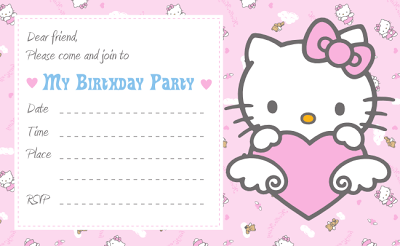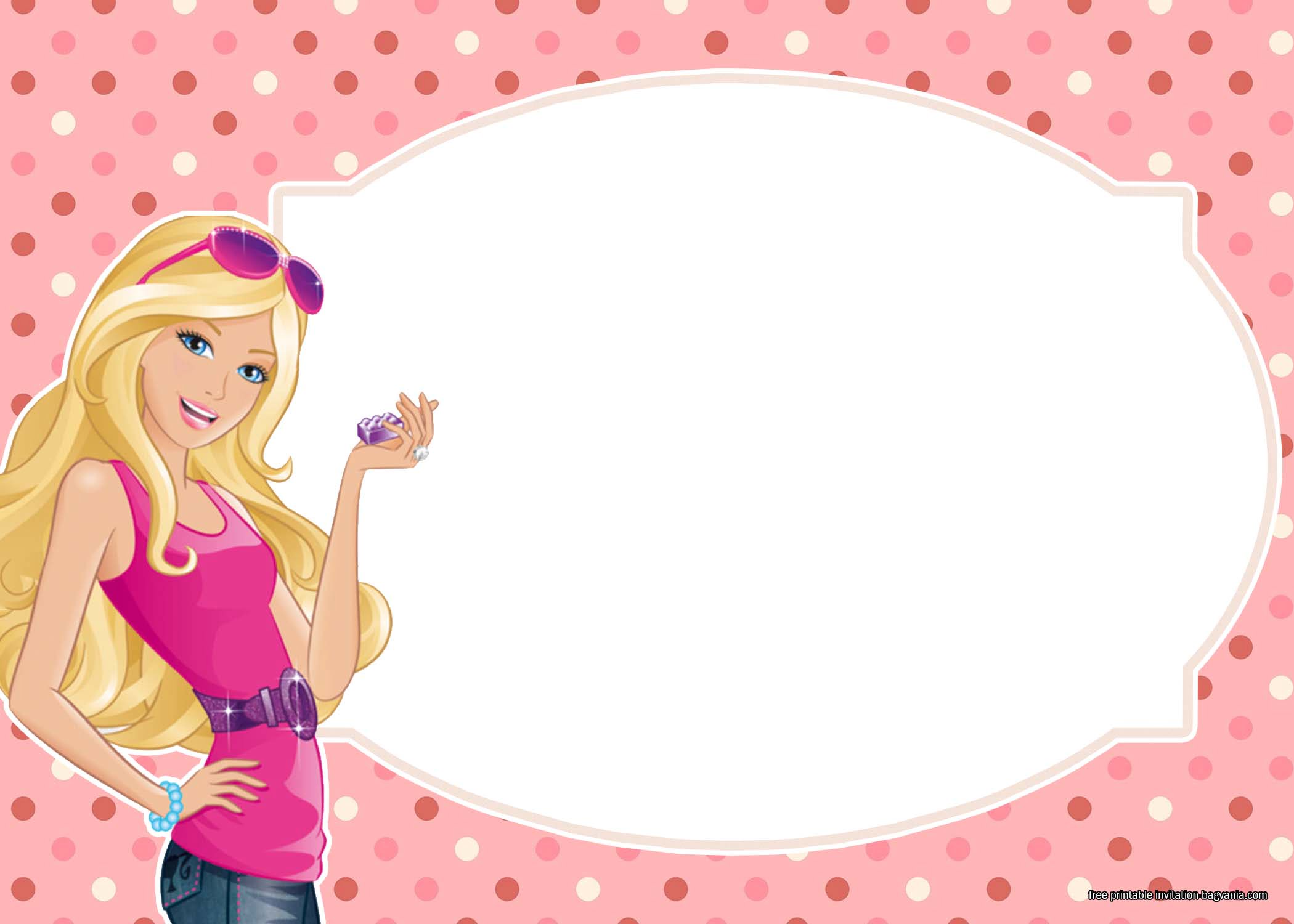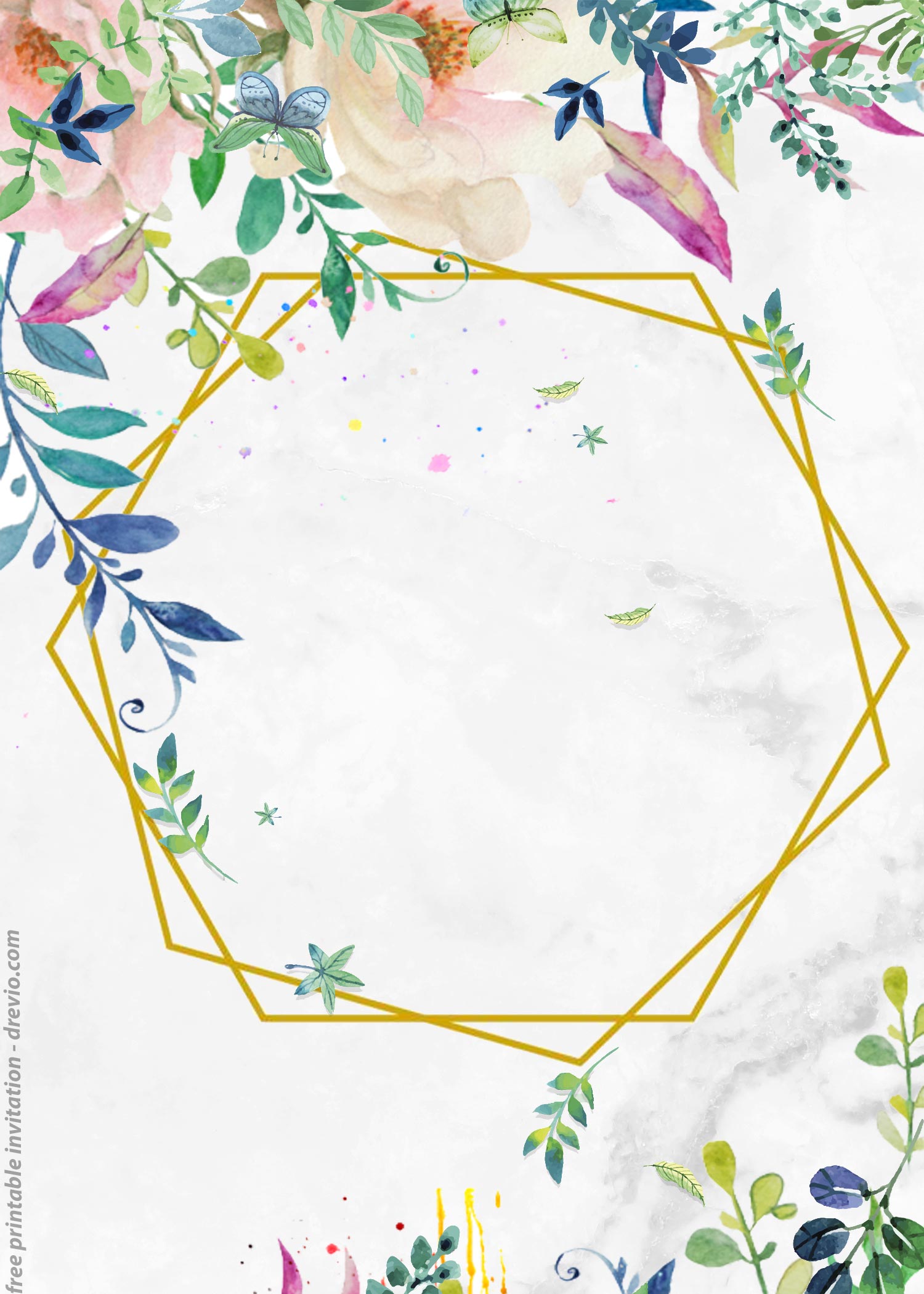Sorting by function is a simple yet engaging activity that helps young children develop essential cognitive and problem-solving skills. By categorizing objects based on their purpose or how they are used, kids enhance their ability to observe, analyze, and make connections between different items in their world. This activity is not only fun and interactive, but it also encourages critical thinking, attention to detail, and organizational skills. Whether you’re working with toddlers or older children, sorting by function can be easily adapted to suit different age groups, offering opportunities for learning at every stage. Let’s explore how this activity can benefit your child and how you can tailor it to make the experience both enjoyable and educational.
Activities for children are a great way to keep them occupied while being really beneficial for your child’s cognitive and fine motor development, and to make it even better, making it a group activity is going to boost their interpersonal and social skills. In this article, you will learn all about the benefits of this seemingly simple activity and be pointed to some great resources for sorting by function activity worksheets. At the end of the article, you will also find some fun invitation templates that you can use to invite other parents with young children and have a mega fun sorting by function playdate!
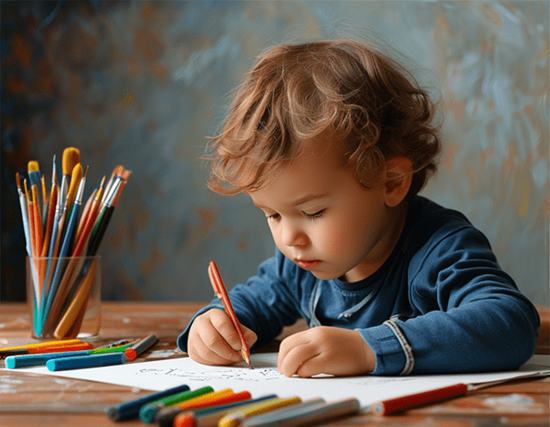
Benefits of Sorting by Function
For the child, doing an activity like this might just be all about the fun. But there are so many ways in which activities like this can boost our children’s developments. Knowing how these activities benefit your children can be the key to catering to their needs. So here are some key benefits of sorting by function:
Cognitive Development
Sorting by function helps children improve their cognitive abilities by encouraging them to think critically and recognize patterns. As they categorize objects based on their purpose, they learn to distinguish between items that serve similar functions and those that do not. This process strengthens their ability to identify key characteristics of objects and fosters their understanding of how things work. By engaging in this activity, children begin to develop important skills in categorization, which will support their learning in other areas, such as language development and problem-solving.
Fine Motor Skills
When sorting objects by their function, young children are often required to handle small items, pick them up, and place them in specific categories. This physical engagement helps improve their fine motor skills by enhancing hand-eye coordination and dexterity. As they manipulate different objects, children practice grasping, pinching, and placing, which contributes to muscle development and overall motor control. These skills are foundational for tasks like writing, drawing, and self-care activities.
Language Skills
Sorting by function activities provide excellent opportunities to expand a child’s vocabulary and improve their language skills. As children explain why they are grouping items together based on their function, they learn new words related to the purpose of objects, such as “tool,” “toy,” “utensil,” or “furniture.” This helps increase their understanding of language and encourages them to express their thoughts more clearly. The activity also supports conversation skills, as children learn to discuss and describe objects in relation to their use.
Social Skills
Sorting by function can be a collaborative activity that fosters teamwork and social interaction, especially when done with other children. Working together to categorize objects encourages children to communicate, negotiate, and listen to each other’s ideas. As they share their thoughts on how to group items, they practice taking turns, respecting different viewpoints, and collaborating toward a common goal. These social interactions are essential for developing empathy, cooperation, and conflict resolution skills.
Critical Thinking and Problem-Solving
This activity encourages young children to think critically as they decide how to categorize items by their function. They must analyze the features and purposes of each object, which requires them to consider various aspects and make decisions based on logic and reasoning. As children work through different sorting challenges, they develop their problem-solving abilities, learning how to approach tasks step by step and refine their strategies. This type of thinking will serve them well in both academic and real-life situations.
Sorting by Function Activity Worksheets
Sorting by function activities are suitable for a wide range of age groups, with the complexity of the tasks tailored to the child’s developmental stage. Here are some worksheets with different levels of difficulty that you can check out:
For Toddlers (Ages 2-3)
For toddlers, sorting by function can start with simple, hands-on activities. They can group objects that are familiar to them, such as sorting toy animals from toy vehicles or kitchen tools from toys. At this stage, the focus is on basic classification and helping them understand that objects serve specific purposes. This beginner worksheet from Edukania is a great one to start off with, with only 4 objects to be sorted into 2 categories.
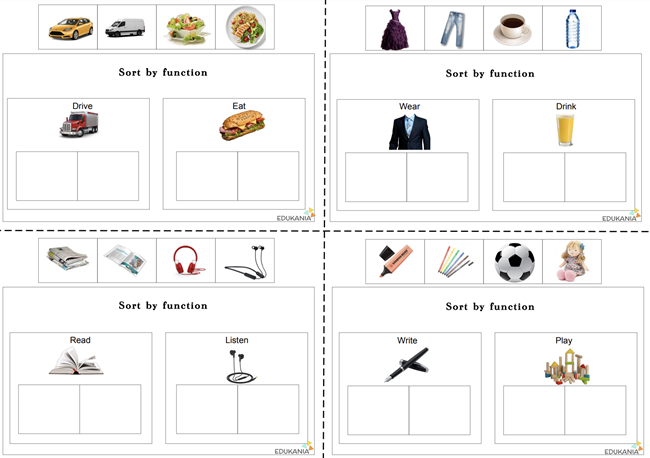
Start with the ones that are familiar to the child and then work towards more objects and variations. As parents or caregivers, you can guide them by naming the items and discussing their functions as they sort. When they are done sorting, you can also ask them to look around and name other items that fall in each category.
For Preschoolers (Ages 3-5)
As children grow, the sorting activity can become more complex. Preschoolers can categorize a wider range of objects based on function, such as sorting clothing by purpose (e.g., hats, shoes, shirts) or tools by their use (e.g., tools for painting, tools for gardening). This age group can also begin to sort objects based on multiple functions or start using verbal explanations to describe their choices. So you may want to look at these worksheets from Live Worksheets. Another great thing about this site is that your child can also do the worksheets online if they want to.
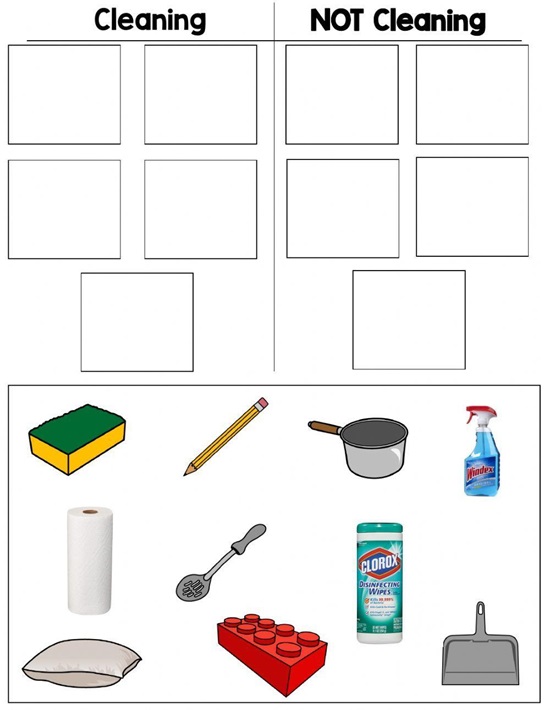
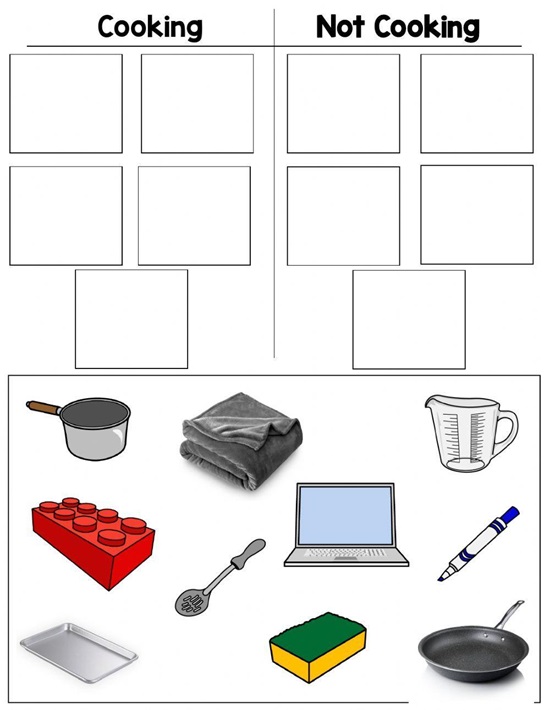
Early Elementary (Ages 5-7)
At this age, children can engage in more advanced sorting by function activities. They can tackle more challenging tasks, like sorting a variety of kitchen items (e.g., spoons, plates, and cups) or organizing tools by their specific functions (e.g., a hammer for pounding, a wrench for tightening). They can also explain their reasoning in more detail, offering a chance to expand their vocabulary and practice critical thinking. At this stage, you can consider Edukania’s advanced sorting by function activity worksheets. They have quite a number of things to sort by their function.
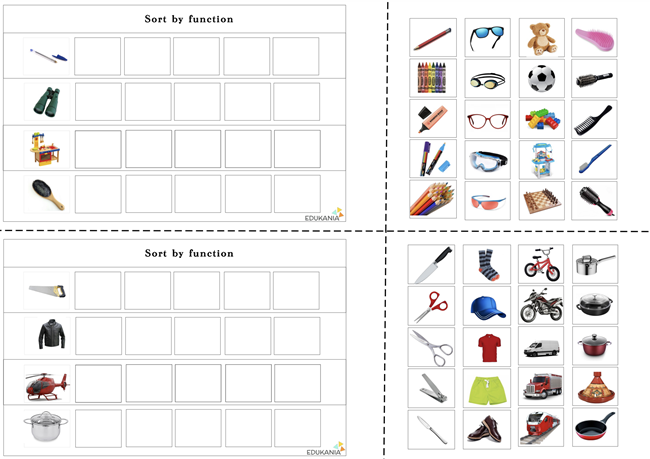
Another great thing is that they do not give a direct clue to the function, but put only putting the first object. This way, your child learns to analyze the function of the first object and then work from there. Your child can also do some hands-on work by cutting and pasting the pictures themselves! A little bit of craft always adds an extra layer of fun to activities like this.
In short, sorting by function is a versatile activity that can be tailored to any age, promoting developmental growth and learning at each stage.
Making it a Playdate!
Yes, sorting by function is an excellent activity to do in a group! It encourages collaboration, communication, and teamwork, making it a fun and educational experience for children when done together. Group activities like this allow kids to share ideas, discuss their choices, and work together to find solutions, all while enhancing their social and cognitive skills.
Benefits of Doing It in a Group:
- Enhanced Social Interaction: Children learn to communicate effectively, listen to others, and express their thoughts clearly. They practice taking turns and respecting others’ opinions.
- Teamwork and Cooperation: By working together to categorize items, children learn the value of collaboration and how to contribute to a group effort.
- Problem-Solving Skills: In a group, children are exposed to different ways of thinking and problem-solving. They can debate and discuss why they believe certain items belong in specific categories, which encourages critical thinking and reasoning.
- Increased Fun Factor: Working in a group often makes the activity more engaging. The energy and excitement that come from doing something together can make learning feel like a game.
How to Invite Others to Join:
- Invite Other Parents or Caregivers: If you’re organizing this activity for a group of children, reach out to other parents or caregivers in your community. Let them know about the benefits of the activity and invite them to join you for a fun learning session. You could say something like, “I’m planning a fun sorting by function activity for the kids this weekend. It’s a great way to help them build skills like teamwork and critical thinking. Would you like to join us?”
- Create a Playdate or Learning Group: Organize a playdate or a small learning group with friends or classmates. You can introduce the activity by saying, “Let’s do a fun sorting challenge! The kids can work together to sort toys, kitchen tools, or other objects by what they do. It’ll be fun and help them learn important skills!”
- Use Social Media or Community Platforms: If you’re part of a parenting group or local community online, share the idea for a sorting by function activity. Post something like, “Looking for families to join a sorting activity for kids! It’s a great way to engage them in learning while having fun. Let me know if you’re interested!”
The key to inviting others is to highlight the benefits of the activity, making it sound both fun and educational, while emphasizing the social aspect for the children.
While you are at it, we have an invitation template sample that you might want to use, to send as a personal invitation or as a social media post. Fun designs can be the thing that will get them excited to come to the playdate you are planning, so check them out right here: 8+ Cute Cartoon Airplane For Boys Birthday Invitation Templates. All you have to do is download and edit in the details to your playdate!

Conclusion
Sorting by function is a simple yet powerful activity that helps children develop essential cognitive, social, and motor skills. Whether done individually or in a group, it offers countless opportunities for learning and fun. By adapting the activity to different age groups, parents and caregivers can ensure that children of all developmental stages can benefit from the experience, building their ability to think critically, communicate effectively, and work as a team.
Inviting others to join in on a sorting by function activity is a great way to foster social connections while supporting your child’s growth. It creates a collaborative environment where children can share ideas, learn from each other, and have fun together. So gather a few friends, organize a session, and watch as the kids enhance their skills while enjoying the process of sorting and learning!

























